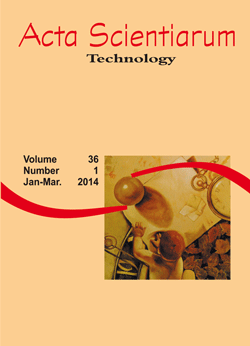<b>Antagonistic activity of dairy lactobacilli against gram-foodborne pathogens</b> - doi: 10.4025/actascitechnol.v36i1.18776
DOI:
https://doi.org/10.4025/actascitechnol.v36i1.18776Keywords:
food safety, lactic acid bacteria, raw milk cheeseAbstract
Thirty-five strains of lactic acid bacteria were isolated from artisanal raw milk cheese, presumptively identified and tested against one dairy Escherichia coli strain. Six lactobacilli, exhibiting antagonistic activity, were identified at the species level and their action was evaluated against four strains of Gram-foodborne pathogens (Escherichia coli O26, Escherichia coli O157:H7, Salmonella spp. 1023, and Salmonella Typhimurium) and the control strain Escherichia coli ATCC 45922. The antagonistic activity was determined by spot method and the inhibition zones were measured by Autodesk AutoCAD 2007. Three strains, all Lactobacillus paracasei, were active against all the pathogens; the other strains, all Lactobacillus plantarum, showed antagonistic activity against some pathogens. This study highlights the intense and different antagonistic activity induced by lactobacilli against various foodborne pathogens thus demonstrating that using selected lactic acid bacteria strains as adjunct cultures could be an effective strategy to prevent the development of foodborne pathogens in artisanal raw milk cheeses, and thus improving their safety.
Â
Downloads
Downloads
Additional Files
Published
How to Cite
Issue
Section
License
DECLARATION OF ORIGINALITY AND COPYRIGHTS
I Declare that current article is original and has not been submitted for publication, in part or in whole, to any other national or international journal.
The copyrights belong exclusively to the authors. Published content is licensed under Creative Commons Attribution 4.0 (CC BY 4.0) guidelines, which allows sharing (copy and distribution of the material in any medium or format) and adaptation (remix, transform, and build upon the material) for any purpose, even commercially, under the terms of attribution.
Read this link for further information on how to use CC BY 4.0 properly.



















8.png)




